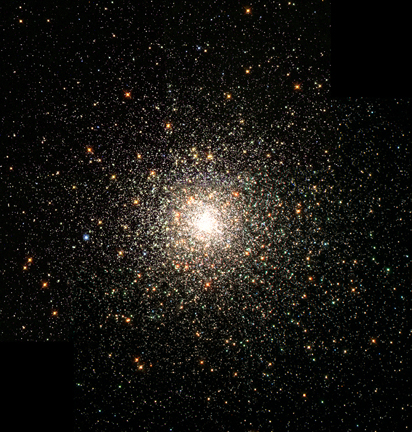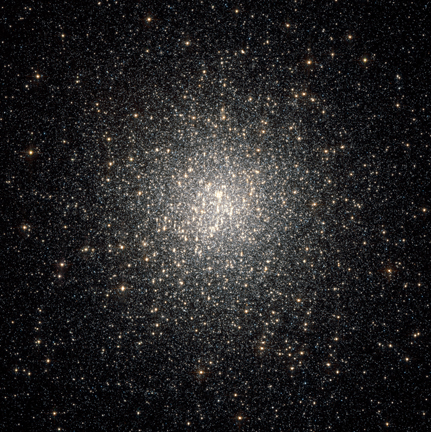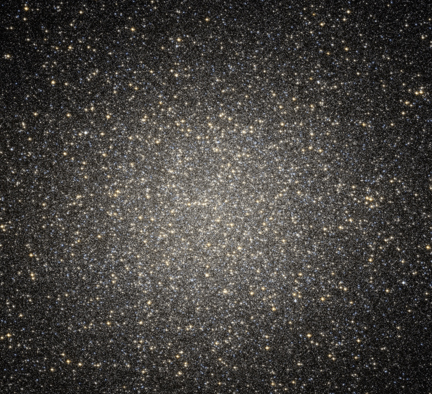Globular Star Clusters
Overview
Globular clusters are ancient clusters of stars that generally lie on the outskirts of galaxies, such as our own. Because they do not generally sit within the main parts of galaxies but rather lie outside, they are said to be in the galactic halo.
Our Milky Way galaxy has approximately 150 known globular clusters. Other galaxies can have many more, or none at all. For example, the Andromeda Galaxy (also known as M31) has thousands of globular clusters, but the Sagittarius Dwarf Galaxy has none.
Globular clusters are spherical in shape and contain anywhere from thousands to over 10 million stars. They are ancient stars usually, often over twice the age of the sun. It is thought that they are some of the first structures of a galaxy to form, and recent research has placed their minimum age at 11.3 billion years (Krauss & Chaboyer, 2003).
Most globular clusters look relatively the same, for they are simply a big ball of stars, though they vary in size and the stars vary in color. The clusters have a dense core of stars that are very tightly packed, and the density of stars decreases outwards from the core. If our sun were a member of a globular cluster, everything on Earth would cast dozens of shadows, and there wouldn't be any real night because the stars near the core of a cluster are so tightly packed*.
*The average distance between stars in the sun's neighborhood is about 4 light-years (0.02 stars per cubic light-year). In a globular cluster, the density of stars can grow to be several stars per cubic light-year.
Uses
Please Note: This sub-section will likely not make sense if you have not read the page on the Hertzsprung-Russell Diagram.
Globular clusters are useful in placing constraints on the minimum age of the universe. After all, the universe cannot be younger than its oldest stars.
Determining the age of a globular cluster makes the main assumption that most of the stars formed at the same time. With that in mind, astronomers can measure the color of the stars (see the Spectroscopy page), and place them on an H-R Diagram. By finding where the Main Sequence Turn-Off point is, astronomers can look at models of stars to determine the corresponding age for that heaviest star that is still on the Main Sequence.
Another use of globular clusters is in the Globular Cluster Luminosity Function. This is an empirical distribution of brightnesses that all galaxies' globular clusters appear to have. By measuring the distribution in brightnesses of globular clusters in a galaxy, astronomers are able to determine how far away the galaxy is by scaling the brightnesses to what they really are.
Note: This is discussed in much more detail on the How to Measure Distances page of this site.
Hubble Gallery of Globular Clusters
 |
| This is a Hubble Space Telescope image of the globular cluster M80. It is one of the densest of the known Milky Way globular clusters, located about 28,000 light-years away. Click here for the HubbleSite description and more images. |
 |
| This is a Hubble Space Telescope image of the globular cluster NGC 2808. It is a strange cluster that seems to show evidence of at least three different generations of stars that all formed early in the cluster's life. Click here for the HubbleSite description and more images. |
| This is a Hubble Space Telescope image of the core of the globular cluster NGC 5139, more commonly known as the "Omega Cluster." It is the largest known globular cluster that orbits our galaxy, containing about 10 million stars. It lies 17,000 light-years from Earth. Click here for the HubbleSite description and more images. |
